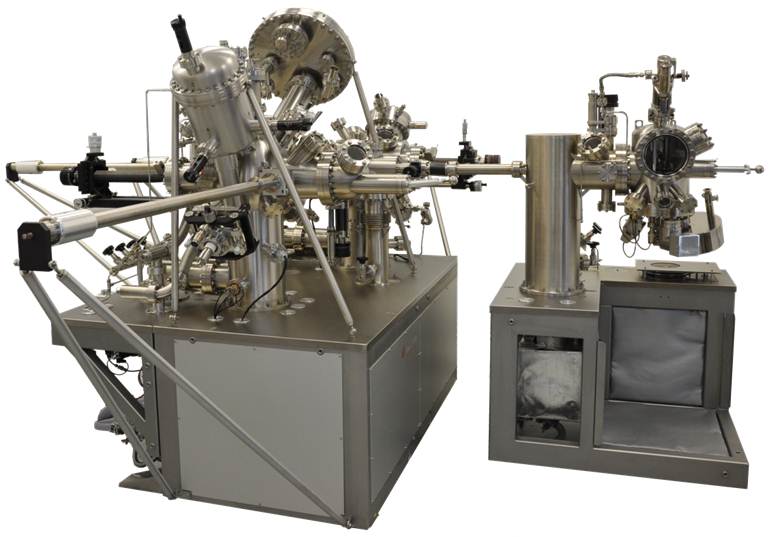Paderborn Integrated Analysis - System for Interface Science (PIA-SIS)
On July 12, 2011, the ultra-high vacuum analytical system "PIA-SIS" was inaugurated at the Institute of Technical and Macromolecular Chemistry under the direction of Prof. Dr.-Ing. Guido Grundmeier as part of the Laboratory for Surface and Interface Analysis. The name PIA-SIS stands for "Paderborn Integrated Analysis - System for Interface Science".

With the establishment of this highly equipped system, an experimental basis for the investigation of physical as well as chemical processes at interfaces of micro- and nanostructured functional materials is created. The combination of surface preparation, electron microscopy and spectroscopy as well as scanning probe microscopy also allows bridging the gap between the experimental characterization of materials and their theoretical description. In particular, questions concerning adhesion and corrosion on surfaces can be investigated in terms of surface chemistry and physics. Thus, the UHV analytical system serves both material development and its simulation.
The system consists of three independent ultra-high vacuum chambers which can be used for the preparation and analysis of surfaces. The following methods are available:
- Low energy electron diffraction: LEED
- X-ray photoelectron spectroscopy: XPS
- Ultraviolet photoelectron spectroscopy: UPS
- Scanning Auger Electron Spectroscopy: SAM
- Scanning Electron Microscopy: SEM
- Ion Scattering Spectroscopy: ISS
- Atomic Force Microscopy: AFM
- Scanning tunneling microscopy: STM

